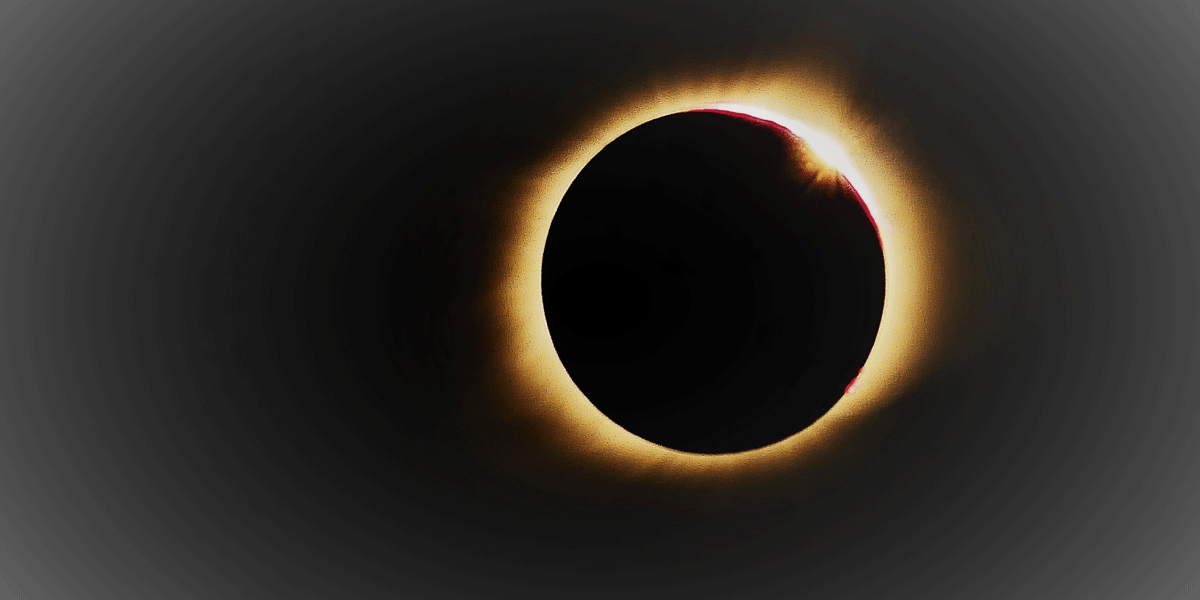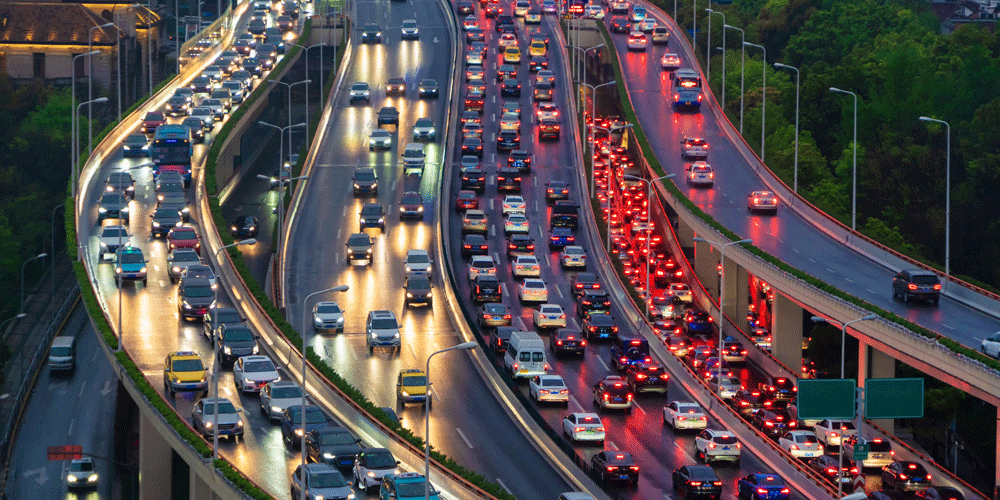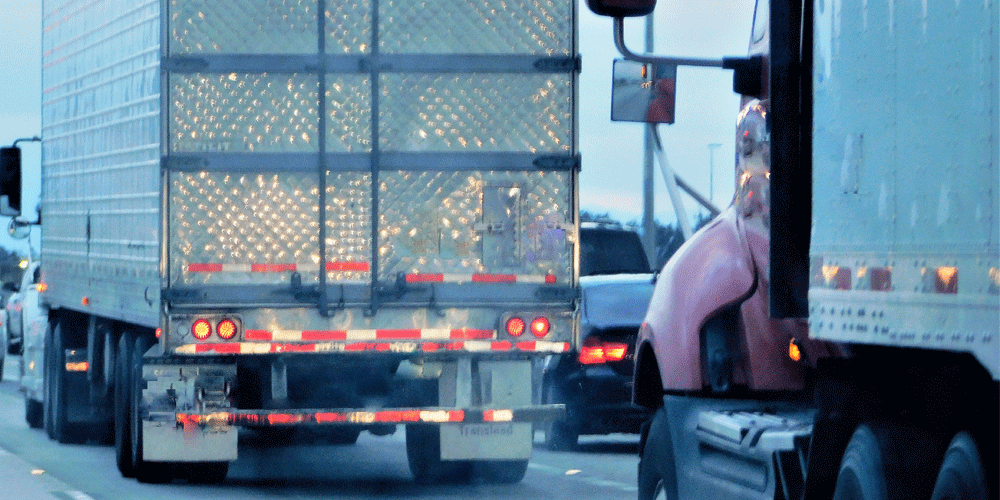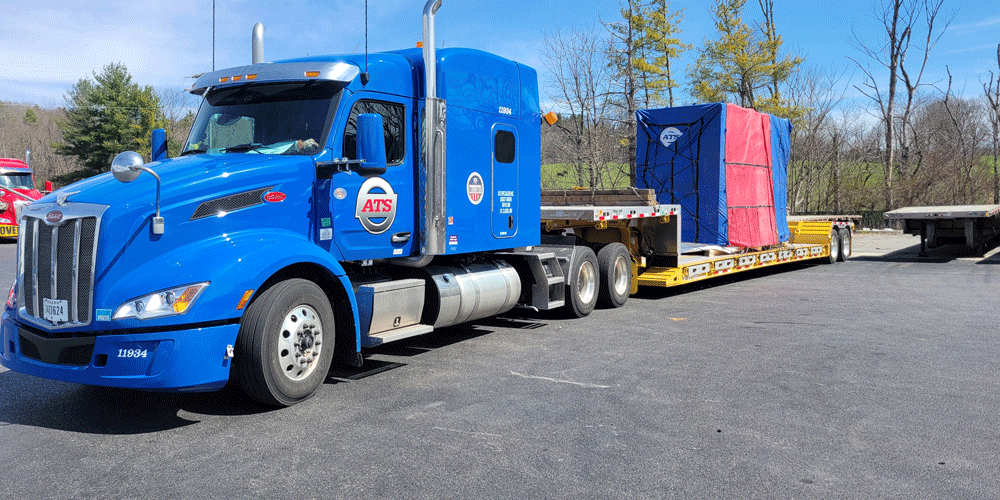
We’re poised to experience a unique celestial event, a solar eclipse, on April 8.
An estimated 3.7 million people will be chasing the solar eclipse, which means you can count on an economic lift and public safety impacts in the path of totality (areas that experience the total eclipse of the sun). That’s in addition to the 31 million people who already live within the path of totality.
While the 48 contiguous states (the lower 48 states — excluding Alaska and Hawaii) will experience the solar eclipse in some capacity or another, only 12 states will experience a total solar eclipse. Most of those states have put travel restrictions in place for drivers like you.
Think of the solar eclipse as an uncontrollable weather event or a busy travel holiday: Something you have no control over but have to deal with regardless.
In our 69 years as a company, Anderson Trucking Service (ATS) has experienced this unique phenomenon more than a time or two — and we’ve surely undergone our fair share of bad weather and busy travel conditions.
In this article, we’ll help you understand the following:
- What is a solar eclipse anyway?
- Why should I care about the solar eclipse as a driver?
- State-by-state travel restrictions for drivers
- Solar eclipse driving tips
When you’re done reading, you’ll be fully prepared for the solar eclipse on April 8. All you’ll need is a pair of eclipse glasses to protect your eyes!
What is a Solar Eclipse?
A solar eclipse occurs when the moon passes between the sun and Earth. This casts a shadow on the Earth and may either fully or partially block the sun. The brief period in which the sun is blocked is known as totality.
The path of totality stretches across Mexico, the United States, and Canada on April 8. While the contiguous U.S. will be able to experience some effects of the eclipse, only 12 states fall into the 115-mile-wide path of totality. The remainder of the country will see a partial eclipse.
So, why are people flocking across the country to see a few moments of darkness? Don’t we experience that every night?
Not quite. Unless you’ve seen it before, the beauty of a solar eclipse is hard to describe. For starters, the sky darkens eerily during partial totality. That lasts somewhere between 15 and 20 minutes before totality. Unlike during sunset or sunrise, the sun is directly above you and then suddenly goes dark.
Just before the moon crosses in front of the sun, you’ll see Baily’s beads, or what looks like glowing drops of light. During totality, the sun’s outer atmosphere is visible. It looks like a bright ring around the dark moon.
According to NASA, those in the direct path of totality will see the eclipse for between 3.5 and 4 minutes.
The moon is significantly smaller than the sun, so when the moon, sun, and Earth align just so, it’s something not to be missed. The contiguous U.S. won’t experience a solar eclipse again until August 2044.
So, while the excess traffic on the roads might be annoying and make your job that much more difficult, it’s hard to blame people for traveling to experience the beautiful phenomenon.

Why Should Drivers Care about the Solar Eclipse?
Traffic, restrictions, and more traffic.
As people across the country chase the darkness, drivers like you are on the road just trying to get your job done. Because of the influx of traffic in these concentrated areas, many states are asking truck drivers to stay off the roads entirely. Some traffic officials are saying it’ll be unproductive for drivers to be on the roads at all.
Some states have regulations in place as soon as Thursday, April 4. This is partially due to traffic and partially due to visibility issues during the moment of totality.
Depending on what you’re hauling and where, these restrictions may stop you in your tracks. At the very least, you’ll probably experience crowded roadways when passing through the path of totality.
State-By-State Solar Eclipse Restrictions
12 states reside within the path of totality as follows: Texas, Oklahoma, Arkansas, Missouri, Illinois, Indiana, Ohio, Pennsylvania, New York, Vermont, New Hampshire, and Maine.
When you’re trip planning and securing your permits, keep these restrictions* in mind for overweight (OW) and oversized (OS) loads:
- Arkansas: Only overweight shipments will be allowed to travel. Oversize travel will be prohibited throughout the state from Thurs., April 4 through Wed., April 10.
- Illinois: No official movement restrictions, but recommends OS/OW shipments plan ahead for increased traffic.
- Indiana: The Indiana Department of Transportation (INDOT) recommends all movement of OS/OW loads be completed the day before (Sun., April 7) or day after (Tues., April 9) the total eclipse. INDOT also recommends no travel on Mon., April 8 due to expected high traffic volumes and heavy congestion on state roads.
- Kentucky: No official movement restrictions, but recommends awareness of heavy traffic and identified areas anticipated to experience the worst congestion. These areas are Interstate 24 Ohio River Bridge at Paducah, the U.S. 41 Twin Bridges at Henderson, and bridges that connect Interstates 65 and 64 at Louisville.
- Missouri: Superloads will not be allowed to move on April 8 in the Southeast District. Single trip permits over 12'6" wide, over 13'6" overall height, and over 80,000 lbs. will not be allowed to move in the Southeast District on Mon., April 8.
- New York: All OS travel within counties in the path of the eclipse will be restricted beginning at 6 AM on Mon., April 8th and continuing to 9 PM, Tues., April 9th. On the New York Thruway, OS travel will be restricted on I-90 in both directions from Exit 24 in Albany to the Pennsylvania Line and on I-190 from 6 AM beginning April 8. OS travel may resume half an hour before sunrise on Wed., April 10th.
- The 34 counties that will be affected are: Albany, Allegany, Cattaraugus, Cayuga, Chautauqua, Clinton, Erie, Essex, Franklin, Fulton, Genesee, Hamilton, Herkimer, Jefferson, Lewis, Livingston, Madison, Monroe, Montgomery, Niagara, Onondaga, Oneida, Ontario, Orleans, Oswego, St. Lawrence, Saratoga, Schenectady, Seneca, Steuben, Warren, Wayne, Wyoming, Yates.
- Ohio: No official statewide movement restrictions, but some cities are restricting OS load movement, including Cleveland. Cleveland will prohibit OS vehicle movement through the city from Mon., April 1 through Mon., April 8.
- Oklahoma: OS travel will be prohibited in McCurtain County only from Mon., April 8 through Tues., April 9. All other Oklahoma counties are unaffected by this restriction.
- Pennsylvania: No official movement restrictions, but drivers are encouraged to check this live traffic map before traveling on Mon., April 8.
- Texas: No permitted travel (OS/OW) will be allowed on Mon., April 8 in counties in the path of the eclipse.
- The 83 counties that will be affected include: Anderson, Atascosa, Bandera, Bell, Bexar, Blanco, Bosque, Bowie, Brown, Burnet, Camp, Cass, Cherokee, Coleman, Collin, Comal, Comanche, Coryell, Dallas, Delta, Denton, Dimmit, Edwards, Ellis, Erath, Falls, Fannin, Franklin, Freestone, Frio, Gillespie, Grayson, Gregg, Hamilton, Harrison, Hays, Henderson, Hill, Hood, Hopkins, Hunt, Johnson, Kaufman, Kendall, Kerr, Kimble, Kinney, Lamar, Lampasas, Leon, Limestone, Llano, Marion, Mason, Maverick, McLennan, McCulloch, Medina, Menard, Milam, Mills, Morris, Navarro, Parker, Rains, Real, Red River, Robertson, Rockwall, San Saba, Smith, Somervell, Sutton, Tarrant, Titus, Travis, Upshur, Uvalde, Val Verde, Van Zandt, Williamson, Wood, and Zavala.
- Vermont: No OS/OW travel will be allowed on state highways on Mon., April 8. Unless otherwise stated, permits will not be issued for the movement of loads in excess of 108,000 pounds or more than 12 feet wide or more than 100 feet long. Additionally, the Vermont Department of Motor Vehicles recommends that commercial motor vehicle drivers traveling to and through the state on the day of and days surrounding the eclipse consider alternative delivery dates and routes to avoid the expected increase in traffic.
*These are the current restrictions at the time of publication. Be sure to visit each state’s Department of Transportation page for the most updated information.

Preparing for the Solar Eclipse: 7 Tips
The biggest problem for you in the days leading up to and after the solar eclipse is going to be the traffic.
Visibility could also be an issue during totality because of darkness (that’s why states already have restrictions in place for OS and OD loads).
Follow these tips to get through it unscathed:
#1: Treat the solar eclipse like any other holiday. There are going to be plenty of tourists around, which means they’re going to be unfamiliar with the roads. Unfamiliar roads mean they’re more likely to miss turns, suddenly hit their brakes, or engage in distracted driving because they’re lost. React accordingly.
#2: Practice safe driving behaviors. You know an increased number of distracted drivers will be on the road, so increase your following distance and lower your speed to give yourself extra time to slow down and avoid collisions.
#3: Expect delays. There’s going to be a lot of traffic, especially in concentrated areas closest to the path of totality. Count on sitting in traffic.
#4: Trip plan. Because you know there are likely to be delays because of the extra traffic, work this into your trip plan. Give yourself extra time to arrive at your destination. You may even decide to start your day earlier or re-route around high-traffic areas if it’s time and cost-efficient.
#5: Stay focused. If driving during the total solar eclipse, keep your eyes on the road and not the sky. Looking at the sky can damage your eyes and lead to an accident.
#6: Take extra breaks. It can be frustrating driving in congestion around distracted drivers. To avoid road rage, take extra breaks to cool off. Practice patience and be self-aware.
#7: Communicate. If you’re going to be delayed for a delivery or pick up, be sure you communicate that to your driver manager and the customer — just as you’d do for a weather delay.

Navigate the Roads With Ease
If you’re traveling through the 12 states of totality in the days before and after the solar eclipse, you can count on extra traffic and travel restrictions that’ll affect your drive time.
Traveling during the solar eclipse won’t be unlike traveling through a national park: Cars stopping randomly in the middle of the road when they see a bear.
Driving during this time might be frustrating, but it definitely doesn’t mean you need to stop driving for a few days (unless you’re traveling in a state with restrictions on an OS or OD load you’re hauling).
With a little patience and planning, you’ll make it through the solar eclipse — just like any other high-traffic holiday — without a problem. Remember to trip plan, follow accident prevention strategies, stay focused, and communicate about any unanticipated delays you’re experiencing.
As always, rely on your driver manager for updates to help you trip plan and work through delays.
To stay updated on the specific times of eclipse totality across the country, visit NASA’s interactive map.
.png)